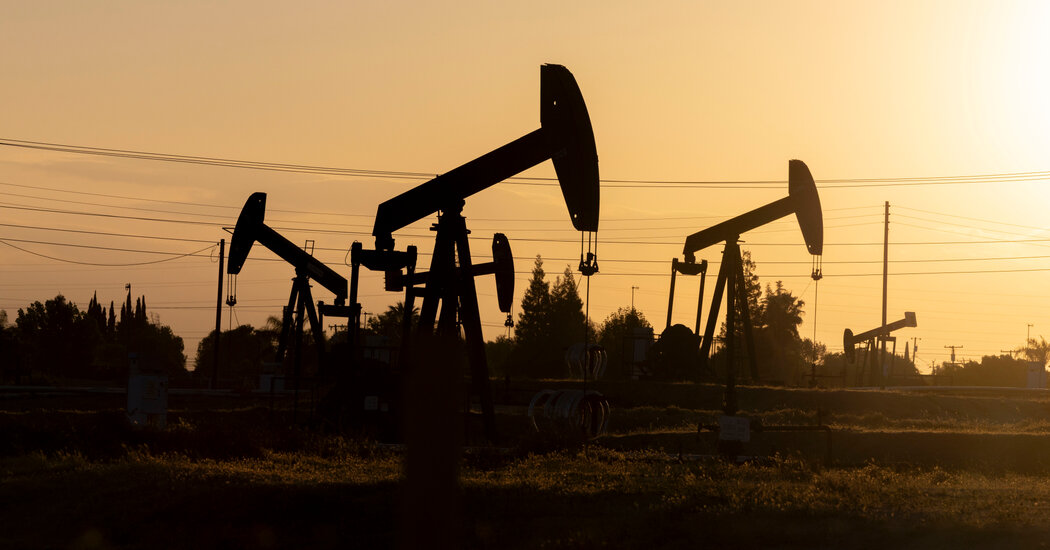Oil prices have fallen, climbed, and fallen again over the past few weeks after a series of geopolitical developments that included a fragile cease-fire in Gaza and new U.S. sanctions on Russian energy.
But at the end of October, the oil market was much where it began the month, with prices hovering around $60 a barrel and companies bracing for the possibility that they could slide further.
There is a lot of oil sloshing around the world, and demand has not kept up. Uncertainty about the future of global trade and the health of the U.S. economy are further muddling the outlook.
Rather than cutting production, America’s largest oil companies are pumping away. Exxon Mobil’s output climbed about 4 percent in the third quarter, compared with a year earlier. Chevron produced around 7 percent more, not counting contributions from Hess, which it bought this summer.
“Our cash flows from our assets are very resilient even in lower prices,” Eimear Bonner, Chevron’s chief financial officer, said in an interview. Cycles, she added, “don’t typically last for long periods of time.”
Exxon and Chevron are in good company, with the oil cartel known as OPEC Plus also ramping up. Saudi Arabia and other members of OPEC Plus are set to meet Sunday to consider putting still more oil into the market. All told, global supplies will increase around 2.1 percent this year, even as demand expands a mere 0.9 percent, according to UBS estimates.
The industry’s persistence in the face of lower prices reflects the fact that drilling remains profitable for a lot of companies. And many executives think demand will catch up relatively quickly, perhaps as soon as next year.
“We’re not talking years, we’re talking months,” Olivier Le Peuch, chief executive of oil field service giant SLB, said recently.
In the meantime, Exxon’s third-quarter profit fell 12 percent, to $7.5 billion. Revenue shrank 5 percent, to $85.3 billion, squeezed by oil prices that were about $10 a barrel lower than they were during the third quarter of 2024. Much higher natural gas prices in the recent quarter helped to offset that.
Chevron’s profit fell 21 percent to $3.5 billion, as revenue slipped almost 2 percent to $49.7 billion.
“In the short to medium term, there are headwinds. Longer term, we continue to have strong conviction in crude prices,” Wael Sawan, chief executive of Shell, said on Thursday, after the British company reported financial results. Shell’s third-quarter profit climbed 24 percent, to $5.3 billion, buoyed by its trading business, but was lower than in 2024 after adjusting for one-time items.
Exxon’s stock price fell more than 1 percent in premarket trading, while Chevron’s edged up. The industry has underperformed the stock market by a wide margin this year, with an exchange-traded fund composed of U.S. oil and gas companies down 5 percent even as the S&P 500 index gained 16 percent.
Like many of their competitors, Exxon and Chevron are trying to maintain profit margins by dismissing workers.
Not only have oil prices fallen, but President Trump’s tariffs are driving up costs for materials like steel pipe that are needed to drill new wells.
The combination of lower oil prices and higher costs has been particularly hard on smaller oil and gas producers, which have pulled drilling rigs out of the field and put off fracking, the process of blasting fissures in rock formations to release oil and gas trapped there.
The number of hydraulic fracturing crews working in the Permian Basin, the top U.S. oil field, has fallen around 25 percent this year, according to the service company ProPetro Holding.
Rebecca F. Elliott covers energy for The Times.
The post Exxon’s and Chevron’s Profits Fall as Oil Prices Stay Low appeared first on New York Times.




